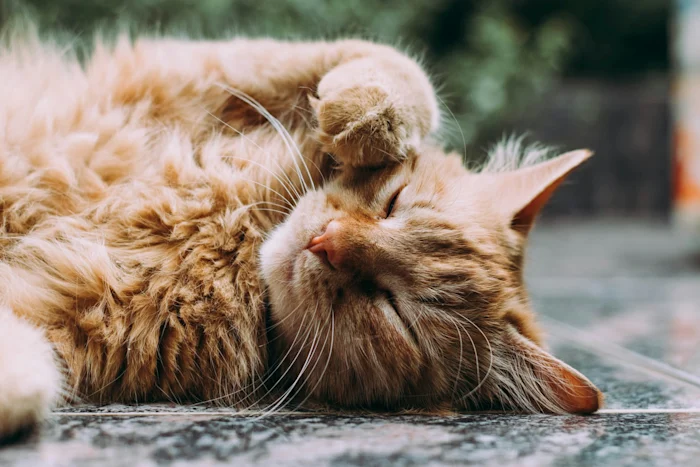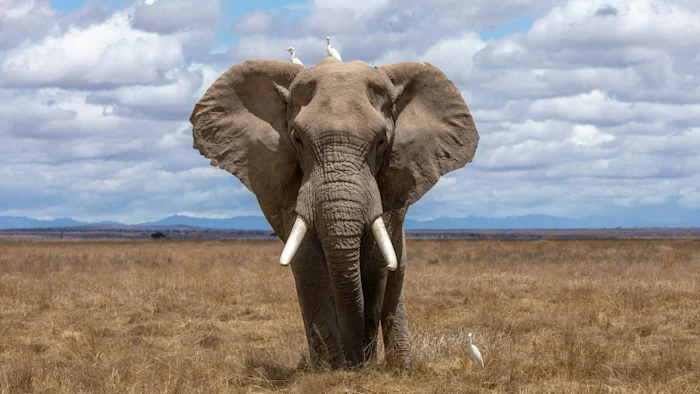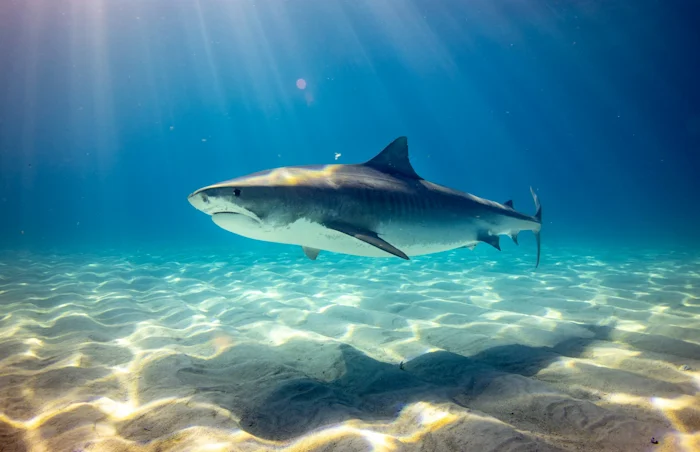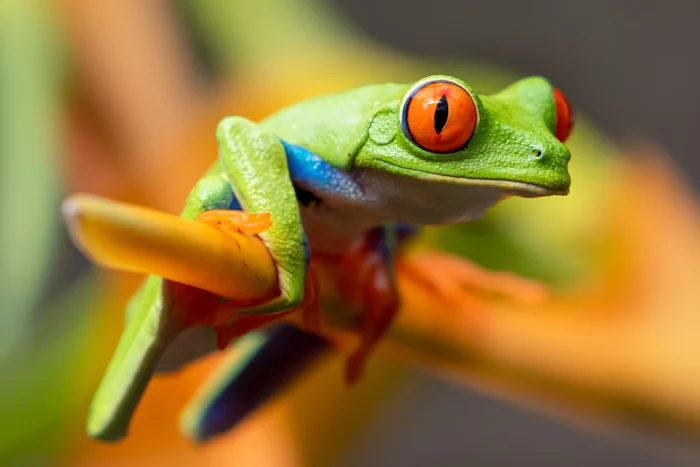
Who are we?
We are a Spanish language school that offers grammar-intensive live Spanish classes via Zoom for adults.
Browse classesWe all love animals, don’t we? I am sure you have a furry pet at home, or if not you may know someone who has a dog, a cat, or perhaps a hamster. Do you know how to say dog in Spanish? What about cat? If you don't, you came to the right place. In this article not only will you learn how to say the most common pets in Spanish, but you will learn about ALL other types of animals, like land and sea mammals, birds, fish, reptiles, amphibians, and even some insects! You may even learn about animals you’ve never heard of! You will also learn some common words we use to talk about these animals: slither, fly, hop, glide, growl, bark, and more!
Are you ready to learn about all the different types of animals? ¡Vamos!
Pets - Mascotas
¿Tienes una mascota? Do you have a pet? You may already be familiar with some of the following animals:
El caballo / la yegua – The horse
El conejillo de indias – The guinea pig
El conejo – The rabbit
La gallina – The chicken
El gato – The cat
El hámster – The hamster
El hurón – The ferret
El periquito – The parakeet
El perro – The dog
El pez – The fish
La tortuga – The turtle
Are there any other pets you can think of that were not included on the list? When you are done reading this article you may want to add more.
¡Ojo! As you already know, Spanish nouns are divided into two groups: masculine and feminine. For some animals, we use a masculine version of the noun to refer to the male and a feminine version of the noun to refer to the female (gato/gata, perro/perra, conejo/coneja). For most animals, though, we use a fixed name in Spanish with an arbitrary gender that we need to learn and memorize. Some are masculine (indicated by the article el) and some are feminine (la). When we want to distinguish the animal’s sex, we add the word macho (male) or hembra (female) to the noun (la ardilla macho, la ardilla hembra). Finally, for some animals we have a different word altogether for male and female (caballo = male horse, yegua = female horse).
Mammals – Mamíferos
Land mammals - Mamíferos terrestres
La ardilla – The squirrel
El búfalo – The buffalo
La cabra – The goat
El camello – The camel
El canguro – The kangaroo
La cebra – The zebra
El cerdo – The pig
El chimpancé – The chimpanzee
El ciervo / el venado – The deer
El cordero – The lamb
El elefante – The elephant
La gacela – The gezelle
El gorila – The gorilla
El guepardo – The cheetah
La hiena – The hyena
El jabalí – The boar
La jirafa – The giraffe
El koala – The koala
El león – The lion
El leopardo – The leopard
El lobo – The wolf
El mapache – The raccoon
El mono – The monkey
El murciélago – The bat
El orangután – The orangutan
El oso – The bear
El oso hormiguero – The anteater
El oso polar – The polar bear
La oveja – The sheep
El panda – The panda
El panda rojo – The red panda
El petauro del azúcar – The sugar glider
El puma – The cougar
La rata – The rat
El ratón – The mouse
El rinoceronte – The rhinoceros
El ternero – The calf
El tigre – The tiger
El toro – The bull
La vaca – The cow
El zorro – The fox
Fun Fact! Some Spanish speakers use the word mono/a not only to refer to monkeys but also to describe someone or an animal as cute. It also means overalls!
Fun Fact! Do you know the tongue twister Tres tristes tigres? It goes like this: Tres tristes tigres tragando trigo en un trigal. Do you think you can say it? Try it!
Aquatic mammals - Mamíferos acuáticos
La ballena – The whale
El capibara – The capybara
El castor – The beaver
El delfín – The dolphin
La foca – The seal
El hipopótamo – The hippopotamus
El manatí – The manatee
La marsopa – The porpoise
La nutria – The otter
La orca – The orca
La otaria / el león marino – The sea lion
Fun Fact! The capybara, beaver, hippo, and otter are considered semi-aquatic mammals, since they live regularly in both aquatic and terrestrial environments.
Birds – Aves
El águila – The eagle
El buitre – The vulture
El cacatúa – The cockatoo
El cardenal – The cardinal
El colibrí – The hummingbird
El aguilucho – The harrier
El búho, la lechuza – The owl
El canario – The canary
El carpintero – The woodpecker
El cisne – The swan
El cóndor – The condor
El cuervo – The crow
El flamenco – The flamingo
El ganso – The goose
El halcón – The hawk
El loro – The parrot
El pavo real – The peacock
El pingüino – The penguin
El quetzal – The quetzal
El tucán – The toucan
La gaviota – The seagull
El gorrión – The sparrow
El avestruz – The ostrich
La gallina – The chicken
La garza – The heron
La golondrina – The swallow
La urraca – The magpie
El ñandú – The rhea
La paloma – The dove
El pato – The duck
El pelícano – The pelican
Fun fact! Did you know that quetzal is not only a bird but Guatemala’s national currency, it was named after their national bird the quetzal?
¡Ojo! Don’t forget to pronounce the U in the word pingüino! The two dots above the U, called diéresis, indicate that the U between G and E or between G and I should be pronounced. Other similar words: cigüeña, bilingüe, lingüística.
¡Ojo! Did you notice that we used the article el for águila? Does that mean that águila is masculine? No, it is actually feminine (las águilas or el águila es blanca); we use the masculine article in the singular form for pronunciation reasons; we do not pronounce an A followed by another stressed one. Other similar words are: agua (el agua), hambre (el hambre).
Fish – Peces
El atún – The tuna
El salmón – The salmon
El tiburón – The shark
Reptiles - Reptiles
El caimán – The alligator
El camaleón – The chameleon
El cocodrilo – The crocodile
La lagartija – The small lizard
El lagarto – The lizard
La serpiente / la culebra – The snake
La tortuga – The tortoise/turtle
Amphibians - Anfibios
La rana – The frog
La salamandra – The salamander
El sapo – The toad
Invertebrates – Invertebrados
La abeja – The bee
La araña – The spider
La avispa – The wasp
El caracol – The snail
El chinche – The bedbug
El ciempiés – The centipede
La cigarra – The cicada
La cucaracha – The cockroach
El escarabajo – The beetle
El escorpión/alacrán – The scorpion
La garrapata – The tick
El grillo – The cricket
El gusano – The worm
La hormiga – The ant
La libélula – The dragonfly
La lombriz – The earthworm
La luciérnaga – The firefly
La mantis religiosa – The praying mantis
La mariposa – The butterfly
La mariquita – The ladybug
El milpiés – The millipede
La mosca – The fly
El mosquito – The mosquito
La oruga – The caterpillar
El piojo – The louse
La polilla – The moth
La pulga – The flea
El pulpo – The octopus
El calamar – The squid
El cangrejo– The crab
La langosta – The lobster
La gamba / el camarón - The shrimp
La medusa – The jellyfish
El saltamontes – The grasshopper
La sanguijuela – The leech
La termita – The termite
Fun Fact! Have you heard the very famous song called La Cucaracha? It’s a popular Mexican folk song about a cockroach who cannot walk. I am sure you are not a fan of cockroaches but the song is catchy and it dates back at least to the 1910s!
Common verbs
Now that you know a lot of animals, you may find it useful to know some verbs used to talk about them. Let’s take a look at some common ones.
Atrapar – To catch
Los camaleones utilizan su larguísima lengua para atrapar insectos.
Chameleons use their very long tongues to catch insects.
Cazar – To hunt
Las orcas cazan en manadas.
Killer whales hunt in pods
Deslizar – To slide/slither
Las serpientes se deslizan para moverse.
Snakes slither to move.
Galopar - To gallop
Los caballos galopaban por la playa.
The horses galloped along the beach.
Gruñir – To growl
Los osos a veces gruñen cuando están agitados o nerviosos.
Bears sometimes growl when agitated or nervous.
Ladrar – To bark
El perro ladró cuando llegó su dueño.
The dog barked when its owner arrived.
Maullar – To meow
La gata maulla cuando tiene hambre.
The cat meows when she is hungry.
Piar – To chirp
Los pájaros pían para comunicarse.
Birds chirp to communicate.
Planear – To glide
Los petauros del ázucar son los únicos mamíferos que planean.
Sugar gliders are the only mammals that glide.
Rugir – To roar
Los leones rugen para demostrar su poder.
Lions roar to demonstrate their power.
Saltar – To jump/to hop
Las ardillas saltan por los árboles para buscar su comida.
Squirrels jump through the trees in search of food.
Volar – To fly
Las avestruces, a pesar de ser aves, no pueden volar.
Ostriches, despite being birds, cannot fly.
Fun fact! Do you know about petauros del azúcar (sugar gliders)? They are also known as ardillas voladoras (flying squirrels) although they are not closely related. They are small marsupials, related to canguros (kangaroos) and koalas. They get their name due to their love for sugary foods and their ability to glide through the air.
Other words related to animals
alas (wings), caparazón (shell), cola (tail), escamas (scales), nido (nest), patas (paws), pezuñas (claws), plumas (feathers), tentáculos (tentacles).
Conclusion
I hope you enjoyed learning about all sorts of animals in Spanish. There are many animals in the world but this article gave you a pretty good start! Practice them, learn about them, and it will be so much easier to remember all the amazing and interesting animals out there!
Quiz
Let’s take a quick quiz to practice what you learned!
Match the correct verb with the following animals
Gato
Caballo
Perro
Petauro del azúcar
León
****
A. Galopar
B. Rugir
C. Ladrar
D. Planear
E. Maullar
***********************
Answer Key:
E
A
C
D
B
Indicate whether the following animals are ave, pez or reptil
Tiburón
Periquito
Cocodrilo
Paloma
Camaleón
***********************
Answer Key:
Pez
Ave
Reptil
Ave
Reptil
Match the word with the animal(s) you associate it with
Plumas
Caparazón
Tentáculos
Alas
Escamas
***********************
Answer Key:
Pájaros
Tortuga, caracol, cangrejo, escarabajo
Pulpo
Pájaros, insectos, murciélago
Peces, reptiles

Who are we?
We are a Spanish language school that offers grammar-intensive live Spanish classes via Zoom for adults.
Browse classes



